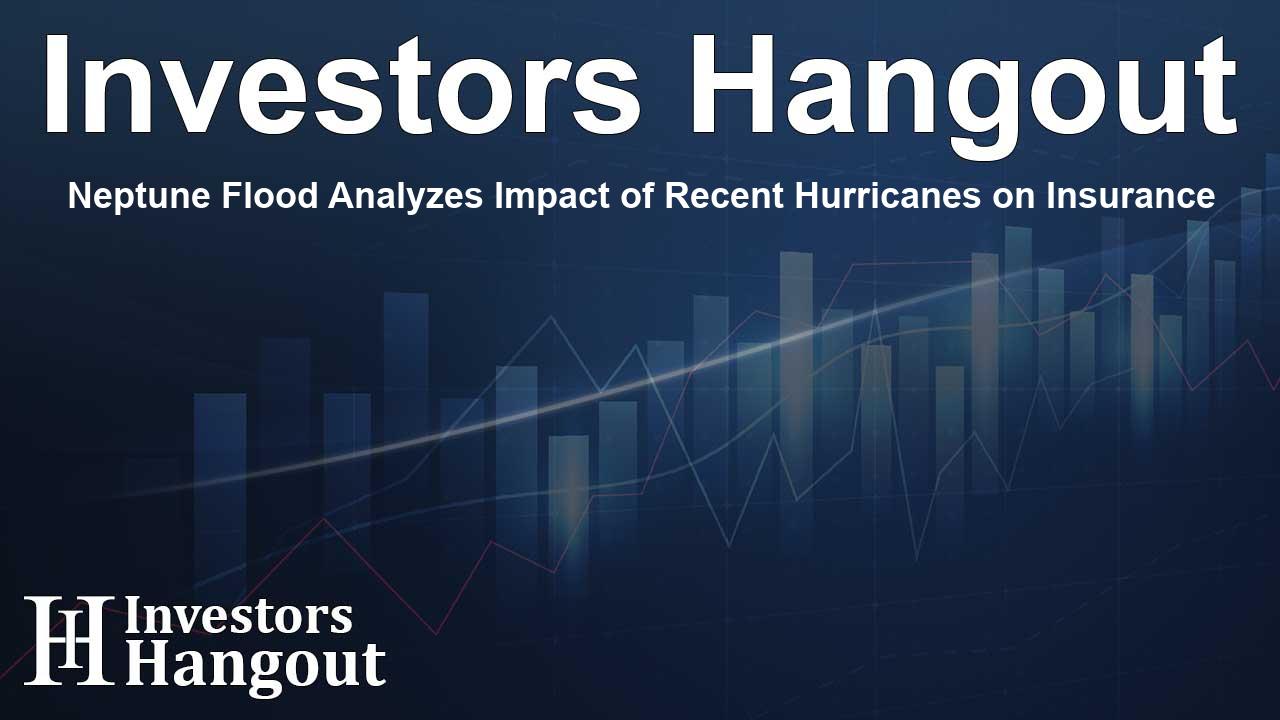Neptune Flood Analyzes Impact of Recent Hurricanes on Insurance

Neptune Flood Evaluates Hurricane Aftermath
Neptune Flood, the largest private flood insurance company in the U.S., has published an insightful analysis following the damages caused by Hurricanes Helene and Milton. This thorough report underscores real challenges and prevailing issues within the flood insurance market, catering to a growing need for enhanced understanding among stakeholders.
Key Findings from the Analysis
In its analysis, Neptune Flood dissects the monumental impact of these hurricanes, marking the first substantial release from the newly formed Neptune Flood Research Group. This specialized team of analysts is committed to providing ongoing insights into the evolving dynamics of the flood insurance sector.
Impact of Hurricanes Helene and Milton
The aftermath of Hurricanes Helene and Milton has been devastating. Helene alone resulted in over 55,000 National Flood Insurance Program (NFIP) claims, with projected losses estimated between $6-7 billion. Meanwhile, Hurricane Milton led to approximately 18,000 claims, inducing projected losses between $1.5 to $2.5 billion. This staggering data reflects just how profound the impact of these storms has been on insured properties.
Financial Strain on the NFIP
The NFIP faces an ominous forecast, with anticipated total losses expected to range from $8.2 to $10.5 billion for the year. This could lead to loss ratios soaring above 200% before factoring in the costs associated with loss adjustments. Such figures illuminate the precarious position of the NFIP and the urgent need for reform.
The Rise of Private Flood Insurance
In light of the NFIP's limitations and increasing premiums, many policyholders are turning to private flood insurance options. These alternatives not only provide higher coverage limits but also offer enhanced flexibility, crucial for adapting to varying risk profiles of properties located in flood-prone regions.
Case Study: Pinellas County
The report also highlights a focused case study on Pinellas County, which recorded over 22,000 NFIP claims attributed to Hurricane Helene alone, alongside an additional 2,000 claims from Hurricane Milton. The extensive devastation is illustrated by data indicating that more than 40,000 buildings sustained damage, revealing the urgent need for better flood risk management and insurance coverage.
Challenges with Current Risk Rating
One of the significant challenges facing the NFIP today is the implementation of Risk Rating 2.0, which has seen many homeowners shift towards private insurance solutions. The transition has revealed weaknesses in the NFIP's structure, driving policyholders to look for more reliable coverage.
Addressing the Flood Insurance Crisis
Critical to the future of flood insurance is collaboration among various stakeholders: insurers, policymakers, and the community at large. Engaging the public and enhancing awareness of true flood risks are essential steps in ensuring that adequate coverage is available. Furthermore, relying on up-to-date flood maps is paramount to accurately understanding risks and driving effective mitigation strategies.
Building Resilience in Communities
Building resilient communities is essential for minimizing the impact of future flooding. With the current market challenges, it becomes increasingly important for insurance entities like Neptune Flood to lead the way in providing sustainable coverage and championing comprehensive risk assessment for property owners.
About Neptune Flood
Neptune Flood stands as a leader in the private flood insurance sector across the nation. With nearly $100 billion in coverage distributed across over 220,000 properties, Neptune provides a robust alternative to the NFIP. Its rapid expansion signifies a commitment to stability within the flood insurance marketplace, showcasing the importance placed on comprehensive flood coverage.
Frequently Asked Questions
What is the significance of Neptune Flood's analysis?
The analysis sheds light on the challenges in the flood insurance market after Hurricanes Helene and Milton, highlighting the pressing need for reform and better coverage options.
How have Hurricanes Helene and Milton affected insurance claims?
These hurricanes have resulted in significant claims, with Helene leading to over 55,000 claims and Milton causing around 18,000 claims, showcasing the extensive damage caused.
What challenges does the NFIP face currently?
The NFIP is projected to encounter immense financial strain, with potential losses between $8.2 and $10.5 billion for the year, leading to unsustainable loss ratios.
Why are homeowners turning to private flood insurance options?
Due to rising premiums and limitations of the NFIP, many homeowners are seeking private flood insurance, which offers better coverage and more flexibility.
What steps are necessary to improve flood risk management?
Improvement requires collaboration among stakeholders, enhanced public awareness, and up-to-date risk maps to inform property owners of their true flood risks.
About The Author
Contact Evelyn Baker privately here. Or send an email with ATTN: Evelyn Baker as the subject to contact@investorshangout.com.
About Investors Hangout
Investors Hangout is a leading online stock forum for financial discussion and learning, offering a wide range of free tools and resources. It draws in traders of all levels, who exchange market knowledge, investigate trading tactics, and keep an eye on industry developments in real time. Featuring financial articles, stock message boards, quotes, charts, company profiles, and live news updates. Through cooperative learning and a wealth of informational resources, it helps users from novices creating their first portfolios to experts honing their techniques. Join Investors Hangout today: https://investorshangout.com/
The content of this article is based on factual, publicly available information and does not represent legal, financial, or investment advice. Investors Hangout does not offer financial advice, and the author is not a licensed financial advisor. Consult a qualified advisor before making any financial or investment decisions based on this article. This article should not be considered advice to purchase, sell, or hold any securities or other investments. If any of the material provided here is inaccurate, please contact us for corrections.
